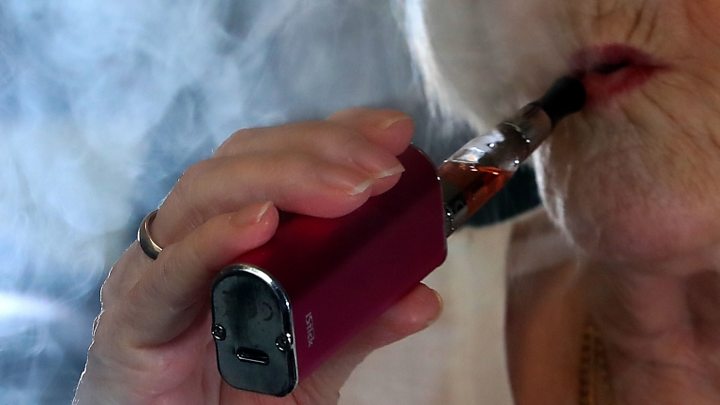E-cigarettes: How safe are they?
 Image copyright Getty Images
Image copyright Getty Images San Francisco has become the first US city to ban sales of e-cigarettes. Yet in the UK they are used by the NHS to help smokers quit – so what is the truth about the safety of e-cigarettes?
How do e-cigarettes work?
They work by heating up a liquid that usually contains nicotine, propylene glycol and/or vegetable glycerine, and flavourings.
Users inhale the vapour produced, which contains nicotine – the addictive element in cigarettes.
But nicotine is relatively harmless compared with the many poisonous chemicals contained in tobacco smoke, such as tar and carbon monoxide.
Nicotine does not cause cancer – unlike tobacco in normal cigarettes, which kills thousands of smokers every year.
That’s why nicotine replacement therapy has been used for many years by the NHS to help people stop smoking, in the form of gum, skin patches and sprays.
Is there any risk?
Doctors, public health experts, cancer charities and governments in the UK all agree that, based on the current evidence, e-cigarettes carry a fraction of the risk of cigarettes.
One independent review concluded vaping was about 95% less harmful than smoking.
However, that doesn’t mean they are completely risk free.
The liquid and vapour in e-cigarettes can contain some potentially harmful chemicals also found in cigarette smoke, but at much lower levels.
In a small, early study in the lab, UK scientists found the vapour could lead to changes in the lung’s immune cells.
It is still too early to work out the potential health effects of vaping – but experts agree they will be significantly lower than cigarettes.

Media playback is unsupported on your device
Is the vapour harmful?
There is currently no evidence that vaping can harm other people.
Compared with the proven harms of second-hand tobacco smoke, or passive smoking, the health risks of e-cigarette vapour are negligible.
Are there rules on what’s in them?
In the UK, there are much tighter rules on the content of e-cigs than in the US.
Nicotine content is capped, for example, just to be on the safe side, whereas in the US it is not.
The UK also has stricter regulations on how they are advertised, where they are sold and to whom – there is a ban on sale to under-18s, for example.
Is the UK out of step with the rest of the world?
The UK is taking a very different approach to the US on e-cigarettes – but its position is very similar to that of Canada and New Zealand.
The UK governments view e-cigarettes as an important tool to help smokers give up their habit – and the NHS may even consider prescribing them free to those who want to quit.
So there is no chance of sales of e-cigarettes being banned, as in San Francisco.
There, the focus is on preventing young people from taking up vaping rather than reducing the numbers of people who smoke.
A recent report from Public Health England found that quitting smoking was the main reason for people to use e-cigarettes.
It also says there is no evidence they are acting as a gateway into smoking for young people.
There are even signs that rules on e-cigarettes in the UK could be relaxed further.
With smoking rates falling to about 15% in the UK, a committee of MPs has suggested bans on vaping in some buildings and on public transport should be relaxed.







